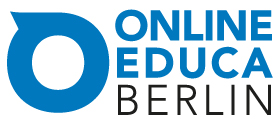 The other thing that I was involved in at Online Educa in Berlin was a session on The Flexible Worker. Three of us presented, each addressing one particular topic. One presentation was on collaborating to produce an elearning course on sleeping better, with the presenter’s firm demonstrating expertise in elearning, while the other firm had the subject matter expertise on sleep health. A second presentation was on providing tools to trainers to devolve content development locally, addressing a problem with centrally-developed content. My presentation was on the gaps between what L&D does and how our brains work, and the implications. And, per our design, issues emerged.
The other thing that I was involved in at Online Educa in Berlin was a session on The Flexible Worker. Three of us presented, each addressing one particular topic. One presentation was on collaborating to produce an elearning course on sleeping better, with the presenter’s firm demonstrating expertise in elearning, while the other firm had the subject matter expertise on sleep health. A second presentation was on providing tools to trainers to devolve content development locally, addressing a problem with centrally-developed content. My presentation was on the gaps between what L&D does and how our brains work, and the implications. And, per our design, issues emerged.
The format was interesting: our presentations were roughly 10 minutes each. And we were using a tool (sli.do) to collect and rank questions. Then we had the audience work at their tables (in the round) to come up with their answers to the top questions, which we then collected and the panelists riffed on the outcomes. We got through three questions as a group, and I thought the outcomes were quite interesting. In short, as a rapporteur at the closing business session, I suggested that the topic ended up being about flexible work, not flexible working.
The top question that emerged had to do with how to support effective search (after I expounded on problem with the notion that it all had to be in the head). The sourced answers included crowd-sourcing the tags for finding objects, using a controlled vocabulary, and auto-analyzing the content to determine tags. I suggest a hybrid solution, in general. The interesting thing here was the audience picking up on the need to go beyond courses and start looking at resources.
The next question was how to move from a training to a performance culture. And it was another exciting development to hear them thinking this way. The solutions offered included coaching, supporting the importance of self-learning (meta-learning, yay!), and working both top-down and bottom-up. I also suggested that measuring was a likely catalyst that could begin to draw attention to outcomes (just as I reckon competencies are the lever in higher-ed).
The third question was about ensuring quality in a localized learning environment (e.g. user-generated content). The concern was that the knowledge of learning design wouldn’t necessarily be widespread. Suggestions included making the content editable for collaborative improvements, or using rankings, and scaffolding of improvement through the community. Here too, a focus on learning itself could assist.
What’s encouraging to me is that each of these questions was really about moving to a transformative viewpoint. The audience was clearly thinking ‘beyond the course’. They were focusing on supporting performers in learning, and resources, and leveraging the community, all activities consonant with the revolution.
An interesting aside came in the closing session. Several folks were mentioning a need for change, and an audience member asked “why?” He was a consultant, and his clients already seemed to be moving forward. I suggested he was seeing the best, and that many folks were not there (mentioning the Towards Maturity data as well as the problems I identified in the beginning of the Revolution book. And it’s a problem that too many people don’t yet see the missed opportunities and don’t feel the pain (and are frankly not looking).
So, there are opportunities to start taking small steps in the direction of taking on a bigger perspective and making the role of L&D more strategic. It first takes an awareness of the problems (my old line: “L&D isn’t doing near what it could and should, and what it is doing it is doing badly, other than that things are fine” :), and then a strategy to move forward. The strategy depends on where the organization is to begin with, but there are systematic principles to guide progress. That’s what I do, after all! It’s nice to see awareness growing. So, are you ready to start taking some positive steps?
Leave a Reply